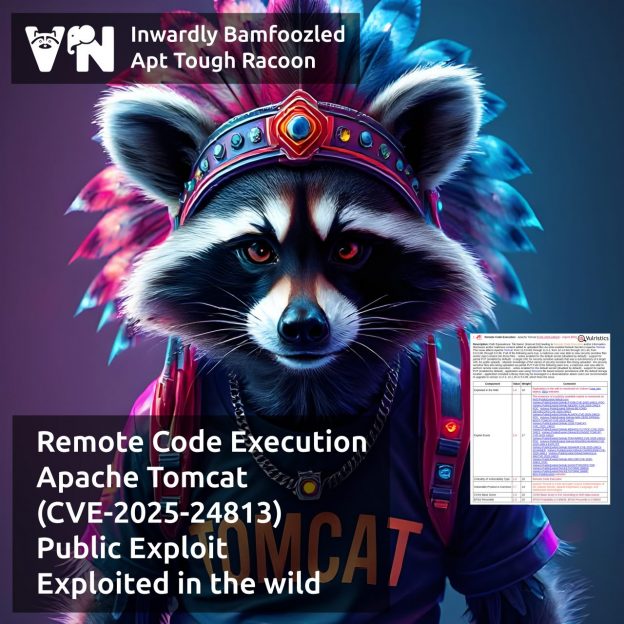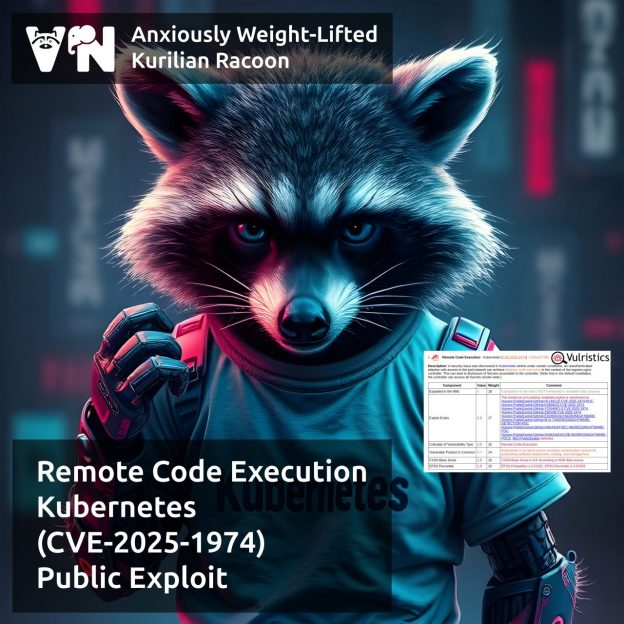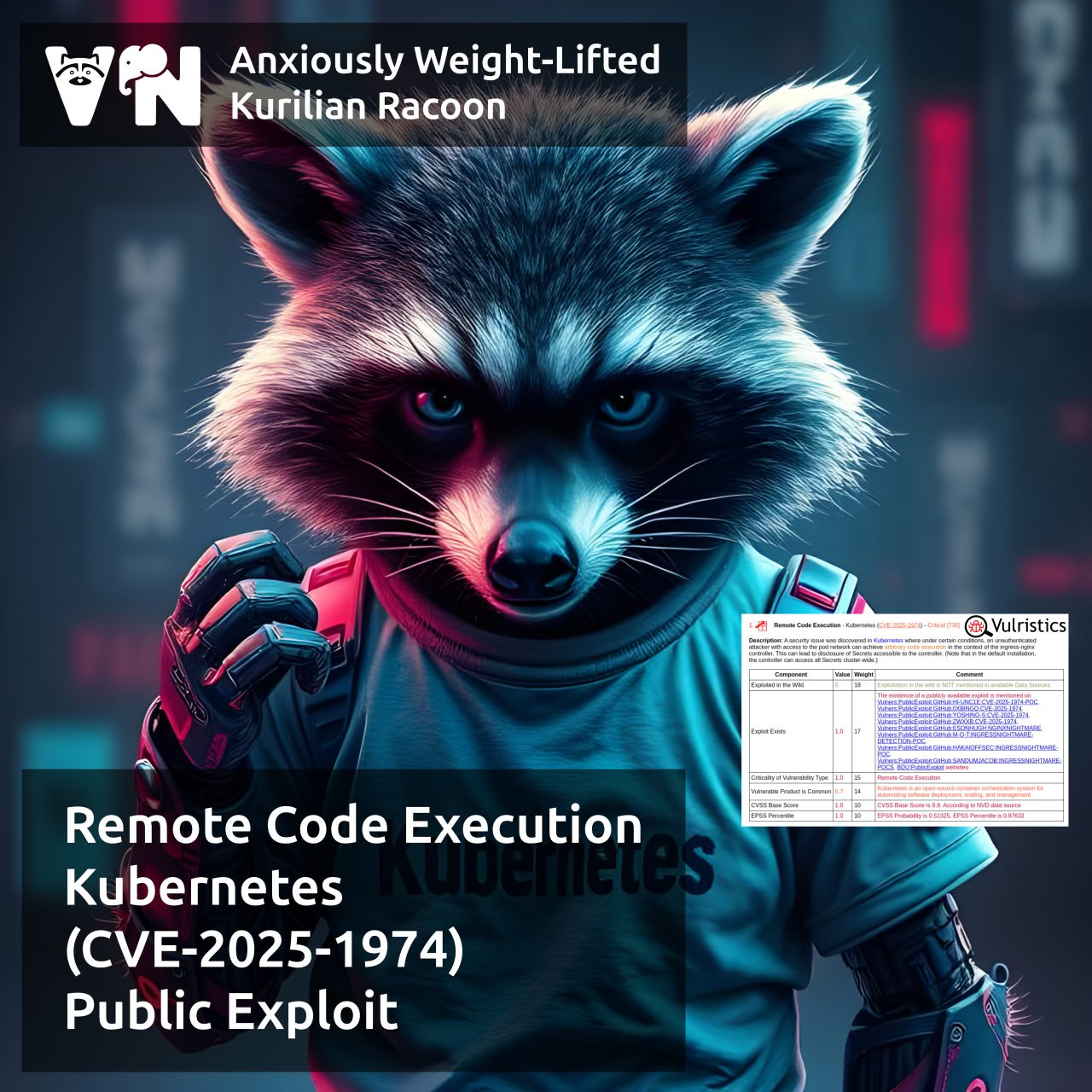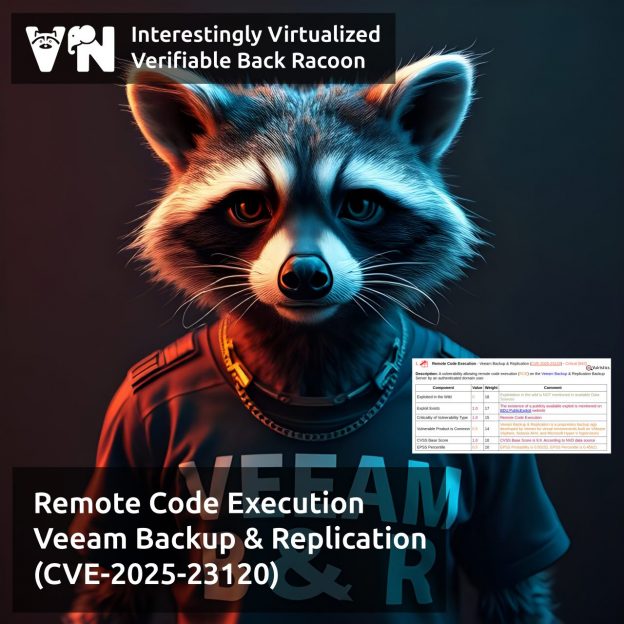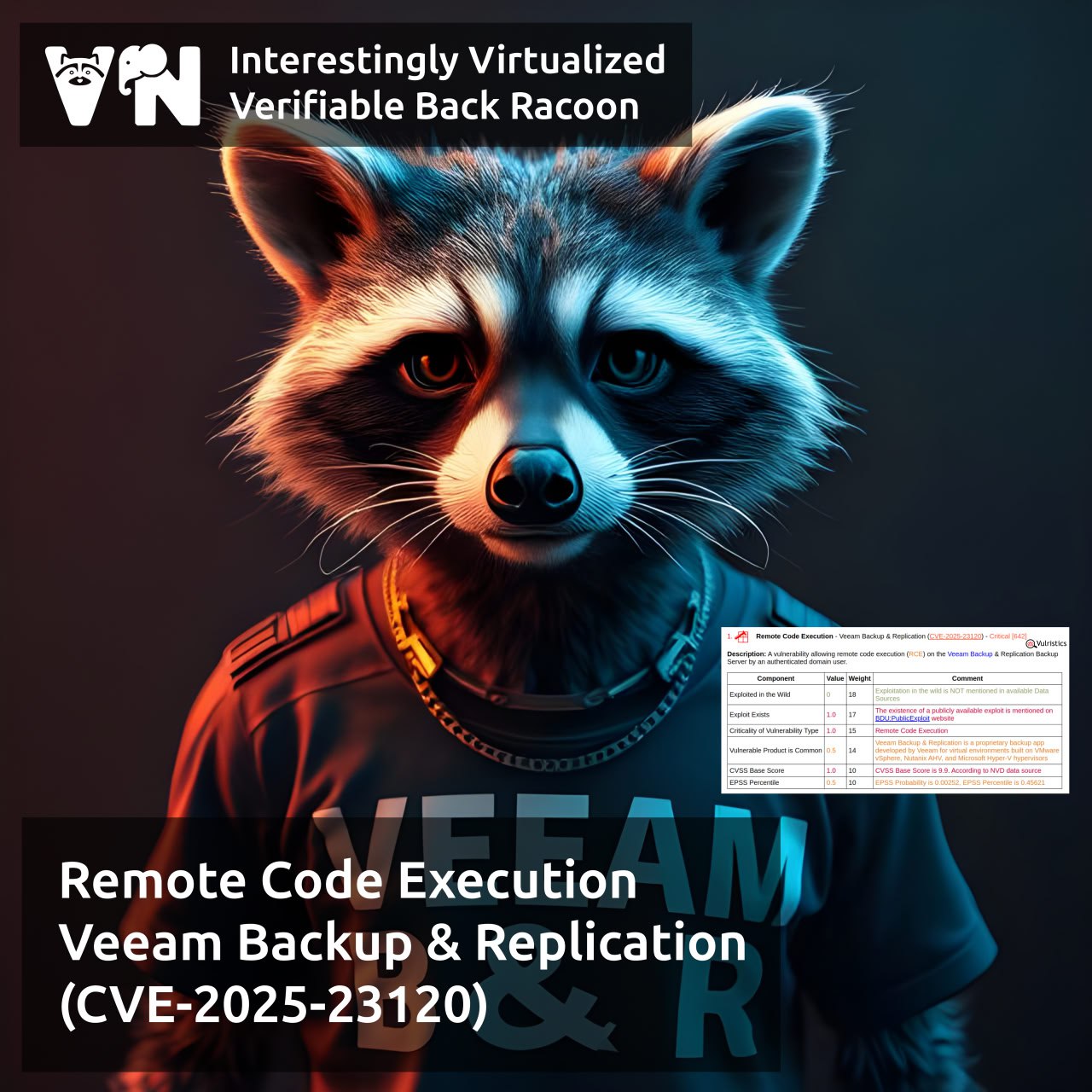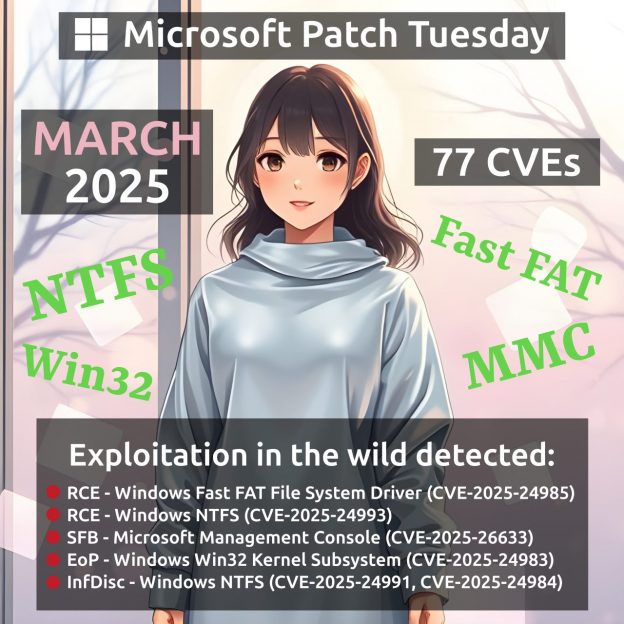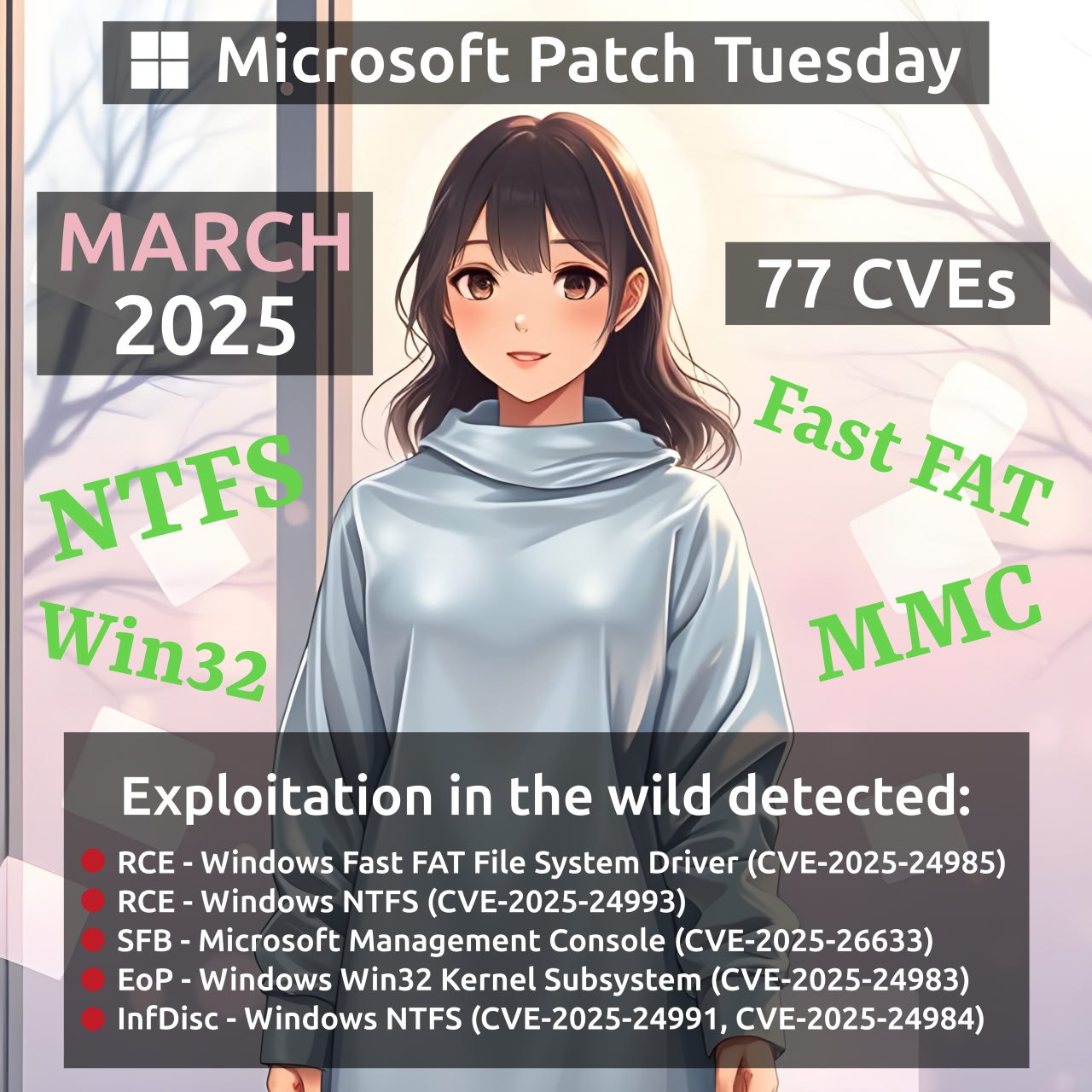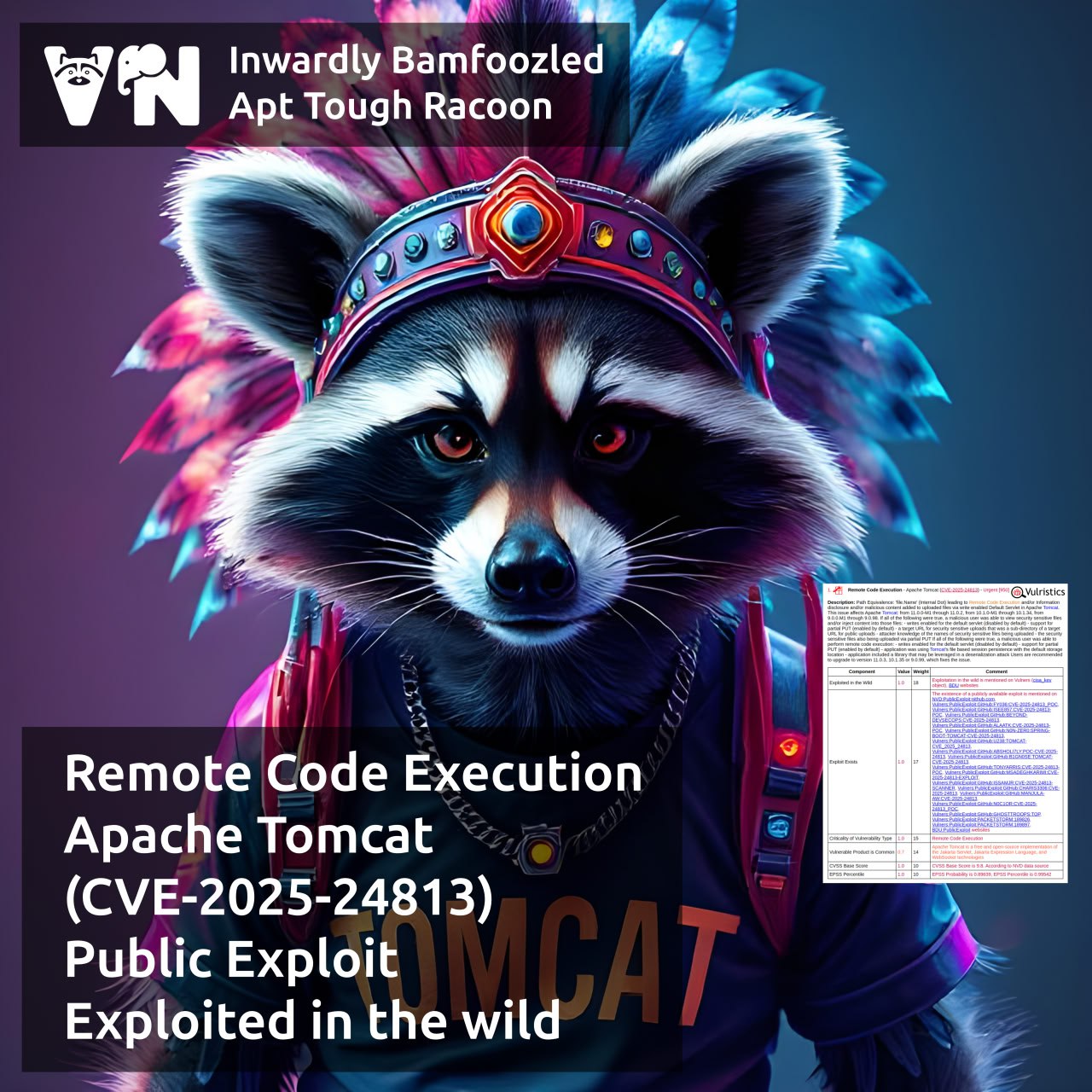
About Remote Code Execution – Apache Tomcat (CVE-2025-24813) vulnerability. Apache Tomcat is an open-source software that provides a platform for Java web applications. The vulnerability allows a remote attacker to upload and execute arbitrary files on the server due to flaws in the handling of uploaded session files and the deserialization mechanism.
🔻 The vendor’s bulletin was released on March 10. It notes that the two conditions required for exploitation (“writes enabled for the default servlet” and “file based session persistence with the default storage location”) are not met in default installations.
🔻 Vulnerability write-up based on patch analysis and PoC exploit were published on March 11. Fully functional exploits have been available on GitHub since March 13.
🔻 Since March 17, there have been signs of exploitation in the wild. 👾 On April 1, the vulnerability was added to CISA KEV.
The vulnerability was fixed in versions 9.0.99, 10.1.35, and 11.0.3.

